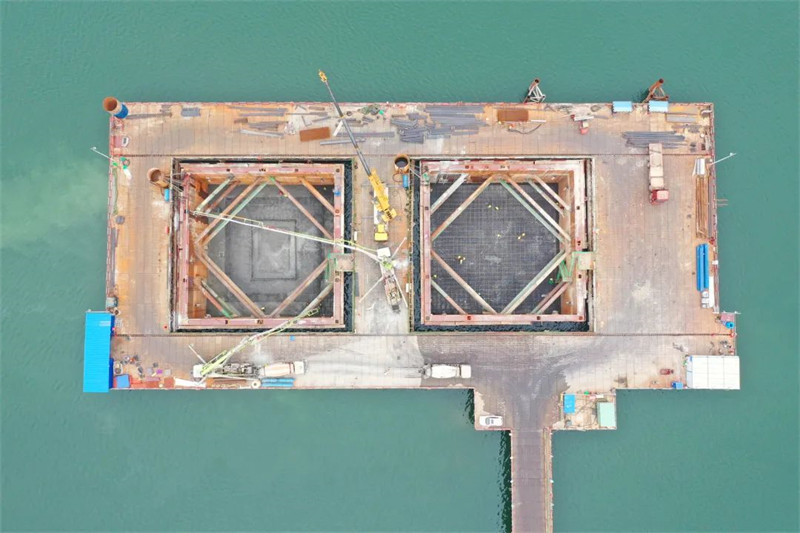On September 18, the key control project of the Xiangyang 207 National Highway Reconstruction Project undertaken by the Second Aviation Administration of China Communications Construction Co., Ltd. - the first cap of the main pier of the Niushou Hanjiang Bridge was completed.

The Niushou Hanjiang Bridge is 4,454 meters long, the main bridge is 660 meters long, and the "H"-shaped main tower is 201 meters high. After completion, it will be the largest single-tower cable-stayed bridge with composite beams without auxiliary piers in China. The main pier cap of the bridge is a separated rectangular structure, which is divided into two left and right caps. A single cap is 29.1 meters long, 29.1 meters wide and 6 meters high, which is equivalent to the size of two standard basketball courts.
This time, the left cap of the main pier was poured, and the total amount of concrete poured was about 5,100 cubic meters, which was poured in two layers. In order to ensure the quality of mass concrete pouring, the project team planned ahead, formulated a detailed special construction plan, and made careful arrangements for staffing, mechanical configuration, monitoring and testing, and safety control. During the construction, the caps are poured in horizontal layers and vertical sections, advancing from the periphery to the center, strictly controlling the layer thickness, implementing each process according to the standard, and setting up cooling water pipes to strengthen temperature control to prevent the concrete from hydrating heat. Cause structural cracks to ensure the overall pouring quality. On September 8, after 36 hours of continuous pouring, the project team successfully completed the pouring of the first layer of concrete; on September 18, after 32 hours of continuous pouring, the second layer of concrete was poured, laying a solid foundation for subsequent construction.
After the project is completed, it will effectively solve the problem of mutual interference between traffic and transit traffic in Xiangyang, improve the traffic capacity of national highways and the overall operation efficiency of the road network, and enhance the radiation force of Xiangyang as a sub-central city in Hubei Province and a central city in the Han River Basin.